Essential Workers: The Backbone of the Pandemic
Photo courtesy of Grace Kraft Senior Grace Kraft works at Ace Hardware and has experienced reduced hours and increased business since the stay-at-home order was placed.
As the coronavirus temporarily reshapes the workforce, many employees are having to quickly adjust to new practices, many of which make work more challenging for them. These employees who continue to work have become defined by a new term: essential workers. Essential workers span many different industries and risk their health for their job every time they go to work.
Dr. Chris Coury, a radiologist at Advocate Condell Medical Center in Libertyville, has seen “the whole hospital affected” by the outbreak, and explained that “different physicians are affected in different ways.”
Dr. Coury described that the emergency room is significantly less busy because “people are avoiding the emergency room unless absolutely necessary,” but when people do come into the ER, “[physicians] are seeing sicker patients.”
As a radiologist, Dr. Coury takes and examines things like x-rays and MRIs. Recently, some of Dr. Coury’s patients have been COVID-19 patients: “COVID is very interesting because it has a very different appearance than other pneumonias. It tends to be scattered throughout both lungs, in both upper and lower regions.”
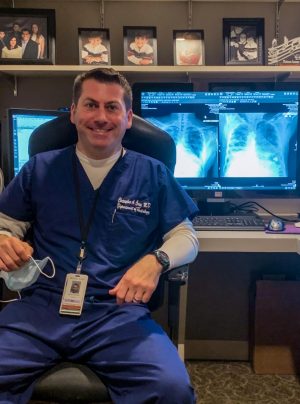
Dr. Chris Coury is a Radiologist at Condell Hospital and has recently scanned several COVID-19 patients. Pictured behind him are COVID-19 pneumonia x-rays.
(Lily Hieronymus )
Condell has a capacity of 300 in-patients and usually has around 250, but is now less than a third full. However, they were caring for around 60 patients with COVID-19 at the end of April, Dr. Coury said.
“It’s very stressful, but there’s a strong sense of teamwork and appreciation amongst [hospital staff],” said Dr. Coury.
While hospital workers are on the frontline of the crisis, employees at all kinds of businesses are adjusting as well. Senior Grace Kraft, an employee at Ace Hardware in Libertyville, said that “everything is very different, even just the atmosphere [of the store]. Interacting with customers is weird right now, and there’s that sense of awkwardness about being out of your home in a time like this.”
Kraft also stated that the virus has affected interacting with coworkers as well. She explained that because they can’t stand close to each other anymore, they can no longer have personal conversations with one another.
Ian Kazian, Deerfield fire chief, paramedic and LHS parent, has had a similar experience with his relationships with coworkers since the pandemic: “The firehouse is very much like a family, and so normally, we’re doing things like sitting down for dinner together after we’re done training. But now we’re trying to be respectful of each other’s spaces and stay farther away from each other.”
Kraft stated that she “thought that the store would be empty all of the time after the stay-at-home order,” but the opposite has proved true at Ace. “There have been tons of people coming in. A lot of them come in for cleaning supplies and stuff, but there are people buying the normal, home improvement stuff as well.”
At the firehouse where Kazian works, however, it has been “eerily quiet.” Kazian explained that this is mostly because there are fewer car accidents on the road and less calls to public places. In the meantime, Kazian and his team have been doing birthday party “drive-bys” to “stay busy and have some fun.”
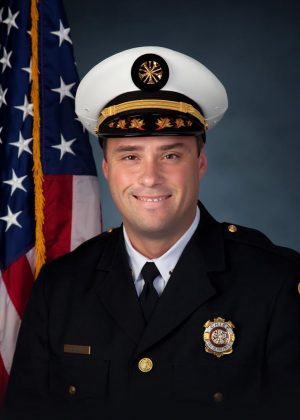
Deerfield Fire Chief and Paramedic Ian Kazian has experienced increased protective practices, such as social distancing, and a quieter atmosphere at work due to decreased traffic.
(Lily Hieronymus)
“Everyone here in Lake County is doing a good job of staying home, I think, which is helping everything more than they know,” said Kazian. “I love my job, but it’s just not the same energy level. Now, it’s just this mutual respect that we’re all going to get through this together.”
Ace Hardware, like most other stores that chose to remain open, has reduced their hours and required employees to wear gloves and a mask during their shift. Some stores are even reducing the number of customers inside of the business at a given time.
“I think most people are trying to be cautious about it. There hasn’t really been an instance where I felt particularly unsafe or exposed,” said Kraft. “Still, there are some customers that come in and they’re not wearing masks or anything, and it’s like they’re just going about their regular day.”
One of many changes that Dr. Coury has seen inside of Condell is discouraging physicians from entering COVID patients’ rooms, unless absolutely necessary. Instead, each patient has an iPad in their room and their doctor communicates with them from the hallway with a screen before entering. He described the pandemic as being “an eye opener to how safely and thoroughly we can practice some parts of medicine from remote areas.”
Some other changes include limiting the number of people who enter the hospital: “They’re very careful about allowing people in the hospital now, and that was never really the case. You used to be able to come in with anything and with anyone, and now all that’s changed,” stated Dr. Coury.
There are also specific entrances for either patients or physicians to use, both of which have attendants to take temperatures at the door and administer a questionnaire about one’s current health status. “You have to be careful in both directions: you have to be careful of the patients potentially being infected, but you have to be careful of the various physicians that are coming in as well,” explained Dr. Coury.
According to Kazian, the fire department has had protocols, training and protective equipment in stock from past outbreaks like Ebola and severe acute respiratory syndrome (SARS); there was just “never a point when we had to use it, until now.”
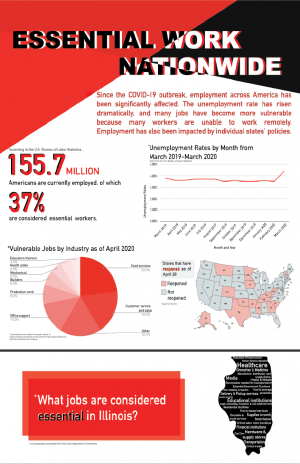
Now, when Kazian and his team respond to a call, they are suited up in a mask, gloves, safety goggles and gowns: “Trying to talk and work while wearing those masks is very challenging. And then your gown is blowing all over the place, and your goggles are fogging up, and everything you’re wearing starts to get sweaty. Meanwhile, you’re trying to help the patient quickly and effectively. It took a few weeks to get used to operating like that.” They have also reduced the number of responders that they send to answer emergency calls from what was normally up to a crew of six people to two or three.
Dr. Coury said similar things about the gear that the hospital staff wears, but added how much extra time it takes for the physicians to take their protective equipment on and off, as there are strict regulations given by the hospital: “After being in a COVID patient’s room, we have to throw away our gloves and gown before leaving the room, and then carry around the rest of our gear, like a mask and eyewear, in a paper bag for the rest of the day, and sometimes multiple days.”
Dr. Coury explained that he hopes the U.S. public health system is more alert and prepared after this, as it’s “not the first pandemic that the U.S. has experienced, but it’s the first wide-scale, modern-day pandemic.”



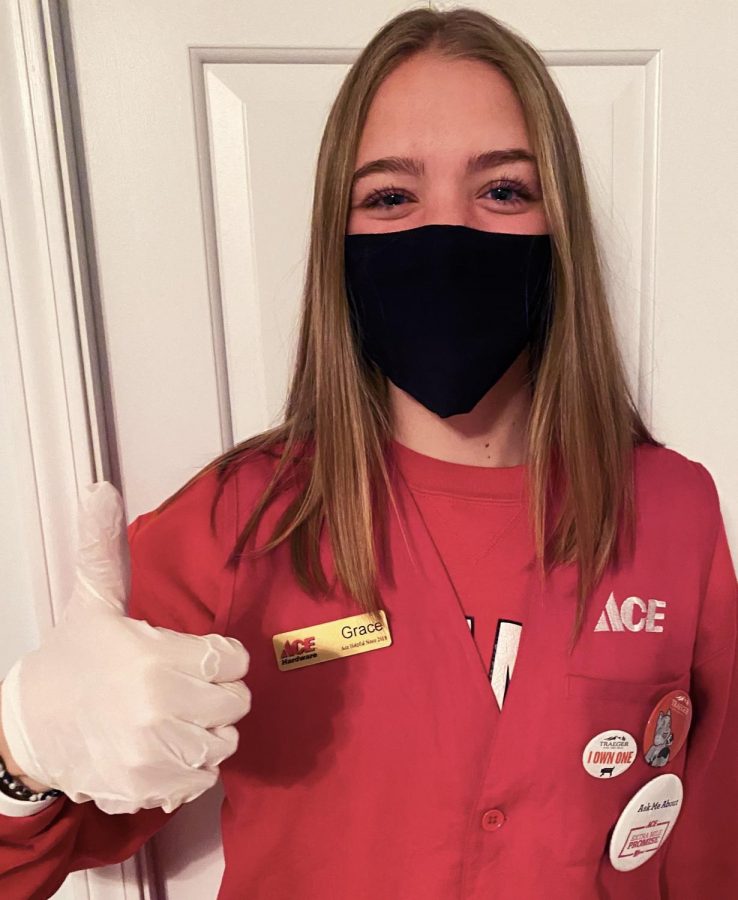



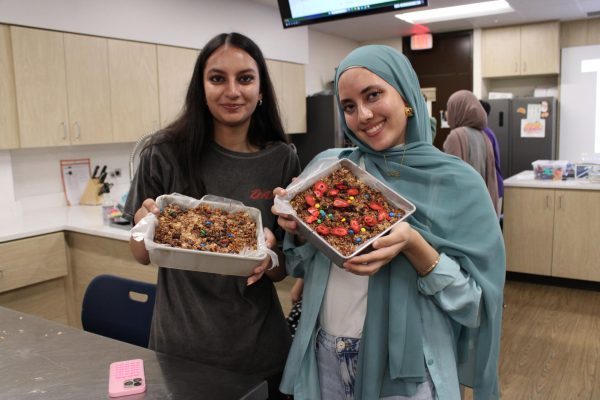
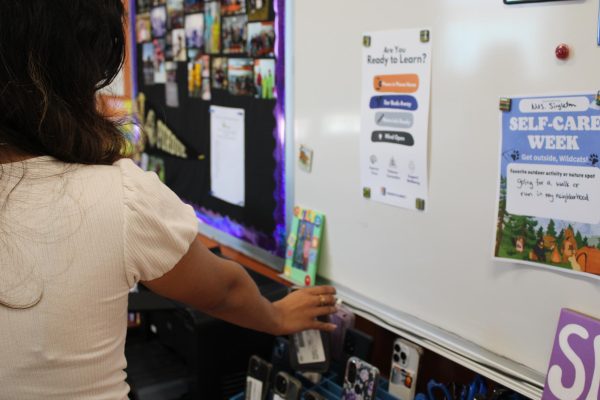


![Wildcats do their pre -race circle that consists of chants and cheers to hype up the team. “I think cross country is such an interesting sport, in the way we're all kind of struggling together at the same time," senior Emme Fogle said. "[We have] comfort knowing that everyone's kind of going through the same thing. It's kind of incredible.”](https://www.lhsdoi.com/wp-content/uploads/2025/09/Screenshot-2025-09-25-3.14.42-PM-600x361.png)
